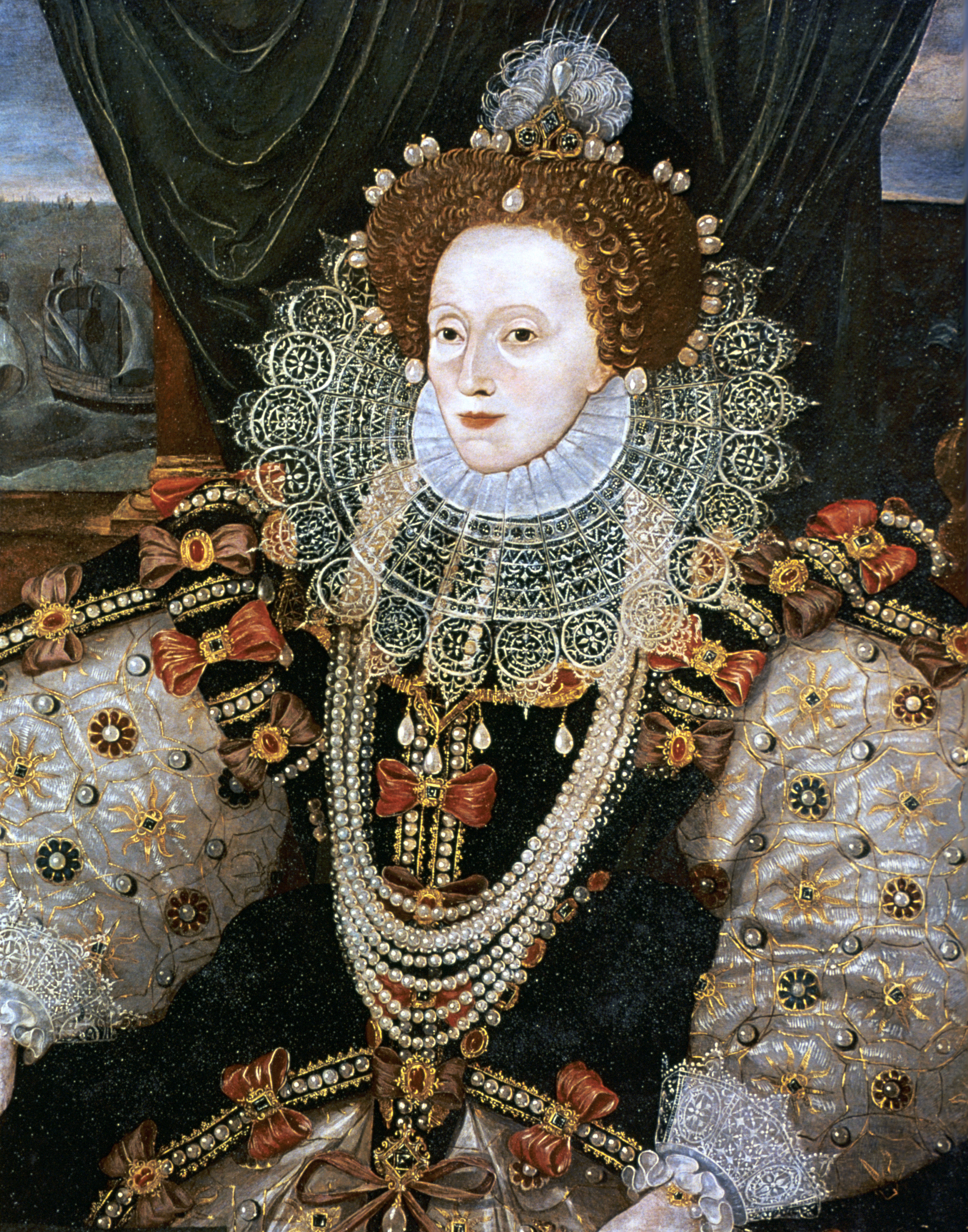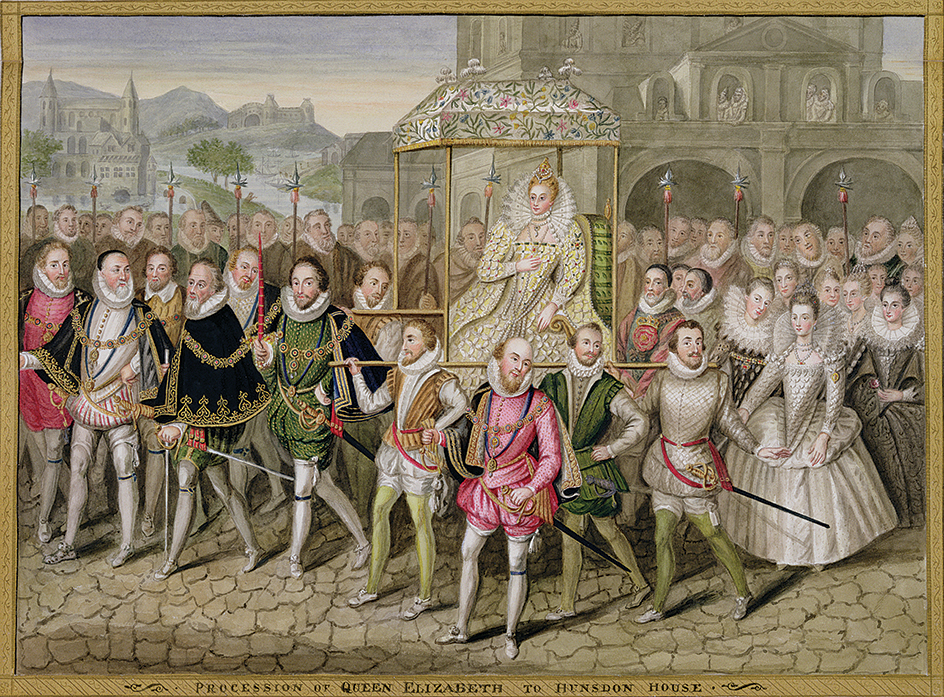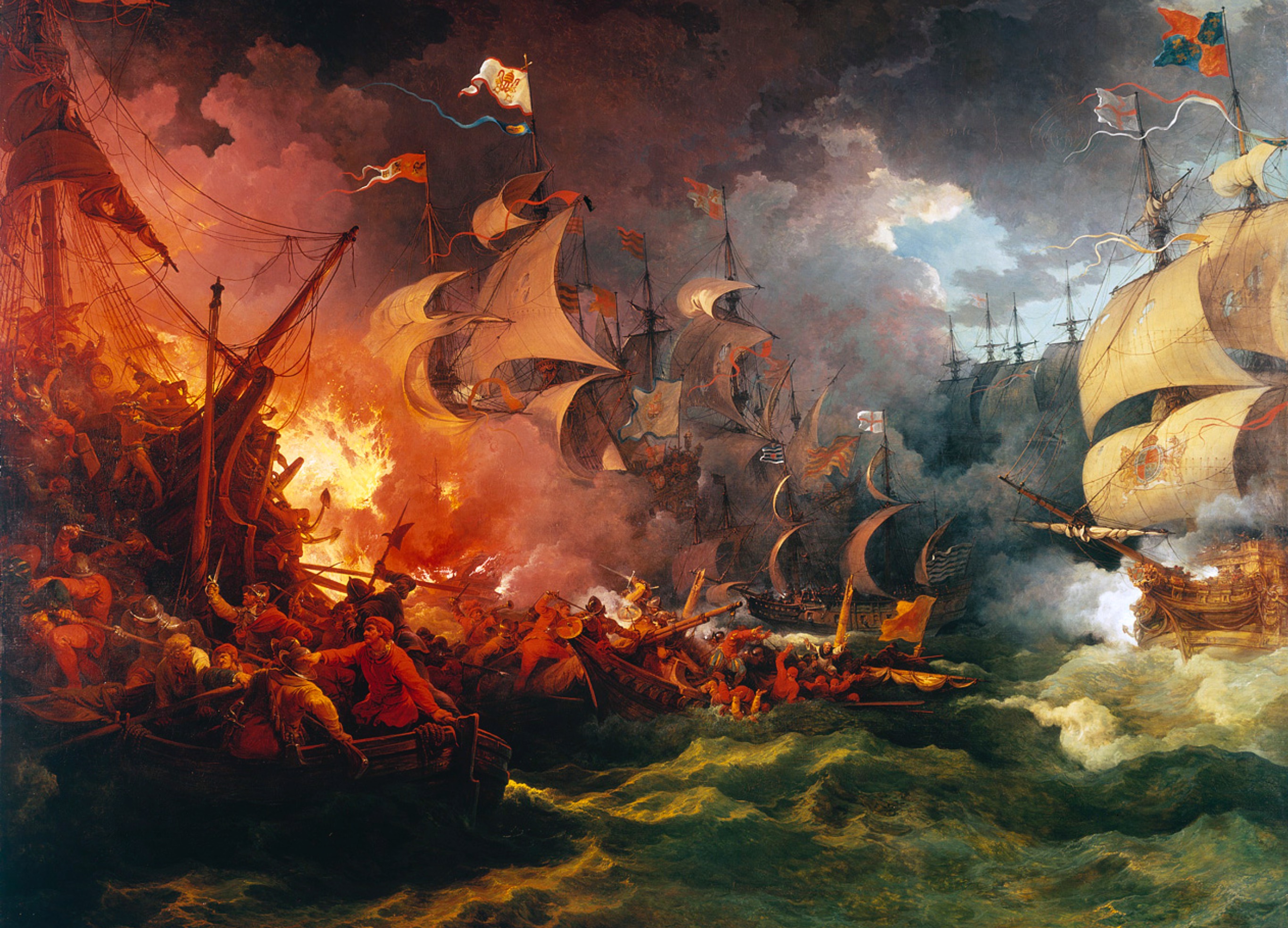Elizabeth I (1533-1603) was queen of England from 1558 until her death in 1603. Her reign is often called the Golden Age or the Elizabethan Age because it was a time of great achievement in England. Elizabeth established a moderately Protestant Church of England as the country’s national church. At the same time, she long avoided war with Europe’s leading Roman Catholic nations. The English navy defeated a powerful Spanish fleet, and English merchants and sailors challenged the Spaniards with greater confidence around the world. England’s economy also prospered. Elizabeth’s court became a center for musicians, scholars, and writers.

Elizabeth was a strong and clever ruler, and she succeeded in furthering England’s interests despite foreign threats and religious unrest at home. Elizabeth gained the loyalty and admiration of her subjects. She reminded them of her popular father, King Henry VIII. The queen had his red hair and pale eyes. She also shared her father’s gifts for music and other arts. In addition, she was an outstanding orator.
Early years.
Elizabeth was born on Sept. 7, 1533, at Greenwich, an estate near London. She was the daughter of Henry VIII and his second wife, Anne Boleyn. Elizabeth’s mother was executed on a charge of adultery in 1536. Henry died in 1547 and was succeeded by Elizabeth’s half-brother, Edward VI. When Edward died in 1553, Elizabeth’s half-sister, Mary Tudor, became queen. Mary had been raised as a Roman Catholic by her mother, Catherine of Aragon. Catherine was the first wife of Henry VIII. Mary was a devout Roman Catholic and tried to bring England back to the Roman Catholic Church. She became known as “Bloody Mary” for her persecution of Protestants. See Mary I.
Queen Mary distrusted Elizabeth, who was next in line to the throne. Elizabeth cautiously avoided any involvement in politics during Mary’s rule. However, Elizabeth came under suspicion in 1554, following an uprising known as Wyatt’s Rebellion. The rebels tried to overthrow Mary, but they failed. Elizabeth was imprisoned for a time, though no evidence was found that linked her to the rebellion. Mary died in 1558, and Elizabeth became queen.
Problems at home and abroad
challenged Elizabeth as queen. In 1557, Mary had involved England in a costly war with France. Struggling Protestant forces in Scotland, France, and the Netherlands sought Elizabeth’s support. But England’s economy was poor, and the treasury lacked the revenue to support the routine costs of government. Elizabeth also had to decide the touchy question of England’s religion—Catholic or Protestant—without causing a revolt.
With the aid of Parliament and her chief adviser, Sir William Cecil, Elizabeth ended the war with France. She also secretly sent money and weapons to the Scottish Protestants. Elizabeth hoped to satisfy most of her subjects by establishing a church that was primarily Protestant in doctrine. Elizabeth therefore signed several laws called the Religious Settlement of 1559. The main law, the Act of Supremacy, reestablished the Church of England, which her father set up and Mary tried to abolish. This church was independent of the Roman Catholic Church, but had similarities to it. The Act of Uniformity approved a new prayer book and enforced its use.
Elizabeth never married, and she used her single status as a foreign policy tool. She encouraged both Catholic and Protestant suitors, but committed herself to no one. By avoiding marriage to a Protestant, she gave encouragement to her own Catholic subjects, who remained loyal with few exceptions. Elizabeth’s flirtations with Catholic suitors kept King Philip II of Spain, a Catholic, from taking direct military action against her for several years while the Church of England gained popular support. For a time, Elizabeth seemed to be in love with one of her subjects, Sir Robert Dudley, the Earl of Leicester. However, Elizabeth’s cautious nature kept her from entering a marriage that lacked political benefit.

Mary, Queen of Scots.
Elizabeth’s cousin, Mary Stuart, was forced to give up her throne as queen of Scotland in 1567. She later fled to England, where her presence caused uneasiness. Mary was a Catholic and heir to the English throne. Many English people feared she would try to replace Elizabeth. Several plots against Elizabeth involving Catholic nobility proved unsuccessful. In 1584, the English aristocracy formed an association to protect their queen and vowed to prevent a Catholic succession in England. In 1586, Mary was accused of involvement in another plot against Elizabeth. Public reaction against Mary was strong. Elizabeth finally, though reluctantly, agreed to Mary’s execution in 1587.
The Spanish Armada.
In 1585, Elizabeth sent an army to help Protestants in the Dutch Netherlands fight Spanish rule. She also encouraged English ships to raid Spanish fleets. Sir Francis Drake, Sir Walter Raleigh, and other “sea dogs” looted several Spanish ships. In 1587, Drake destroyed 30 Spanish ships in port at Cádiz. These events and the execution of Mary Stuart led King Philip II of Spain to approve an invasion of England. He assembled an armada and sent it to England in 1588. But the smaller and swifter English vessels routed the Spanish fleet. Fierce storms then wrecked many of the fleeing Spanish ships off the coasts of Ireland and Scotland. Spain’s power was seriously damaged, but the war went on for 16 years. See Spanish Armada. 
A new optimism.
Despite the armada’s defeat, many English people still feared a Spanish invasion. But Elizabeth eased their fears in August of 1588 with a speech to soldiers assembled at Tilbury. Her words stirred national pride and confidence and scorned any European power who dared to invade England. Her optimism was typical of one of the most creative and productive periods in England’s history. English literature, in particular, thrived during this period. Francis Bacon composed his Essays; Christopher Marlowe wrote and staged The Tragical History of Doctor Faustus; Edmund Spenser wrote his epic poem, The Faerie Queene; and William Shakespeare wrote some of the world’s greatest poetry and drama (see English literature (The beginning of modern English); Shakespeare, William). Already Sir Walter Raleigh had sent settlers to America, opening the way for a great colonial empire.
Later years.
Problems at home marked the end of Elizabeth’s reign. The Irish rebelled, and the economy soured. The Earl of Essex, an English soldier whose accomplishments Elizabeth admired, led a rebellion against the government in 1601. He was soon captured, convicted of treason, and executed. Elizabeth died on March 24, 1603. She was succeeded by James VI, the Protestant son of Mary Stuart.
